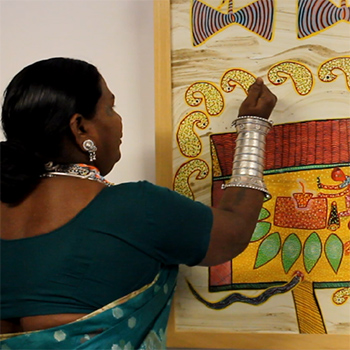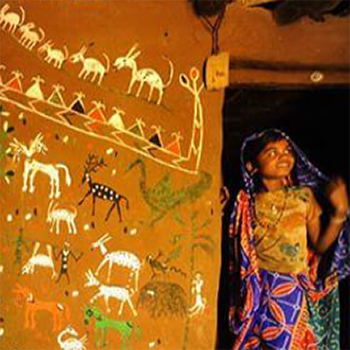The artificial divide created by formal institutions such as schools makes us believe that learning primarily happens within the confined walls of a classroom. This assumption, besides certifying learning of a certain kind, inadvertently disowns learning practises in other informal contexts, past or present. The study endeavours to celebrate 'learning of an art form," which is perhaps more spontaneous, natural, and organic, with the intent to draw pedagogic insights that might be later adapted to informal and formal learning spaces as well. The choice of the Bhil artist community in India was deliberate and conscious, as it makes for an interesting case study where their artforms, which are in transition, reflect both continuity and discontinuity in their beliefs, relationship with art, and art practises from the past. On the one hand, their ritualistic Pithora artform is essentially traditional and confined within the community, and on the other, the Bhil art is also emerging as a commercial artform. This transition is comparatively recent and situates indigenous art in the present by addressing the dynamism and evolution of the art itself.
The research objective thus has two aspects: understanding the nature of the human-art relationship and the pedagogic approach to its practise. The research posed several challenges, particularly in identifying a particular theoretical lens that would do justice to the above research objective. Since the artform had various dimensions to the study, I have used critical insights from the works of several thinkers and scholars working in diverse areas. I have used Durkheim’s lens (1912) to study the belief system of the community linked with art, Paniker’s lens (1972) to interpret the oral narratives guiding the art, and Dehejia’s lens (1990) to understand the visual narratives. Further, I have used the elements and principles of art to analyse the visual form of the art.
For a study of this kind, ethnography—the flesh and blood approach, which entails immersion in the field and uses participant observation as a central tool—was an obvious choice. Given the complex nature of the study and its location across multiple sites, involving several artists and respondents, the methodological approach adopted in the beginning also kept evolving. The research tools were extended to involve structured, unstructured, and group interviews and workshops. Visual ethnography helped in documentation through photographs, videography, and sketches. Over and above this, a research methodology was designed such that the researcher herself started learning the indigenous art from a senior Bhil artist, Bhuri Bai1, and documented the process through visual ethnography and reflective research. This ‘experiential ethnography," along with reflective documentation, later became the critical tool for data collection and analysis.

